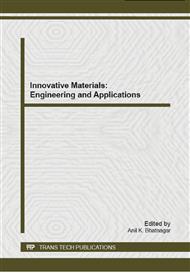p.441
p.447
p.454
p.460
p.464
p.471
p.477
p.482
p.489
Progress of Small Molecule Fluorescent Probes for Detection of Thiols
Abstract:
Thiols play key roles in biological systems. They are important parts of many organisms proteins and small molecules, and have an important role in cellular antioxidant systems. In recent years, fluorescent methods for detecting the mercapto compounds have developed rapidly, based on its apparent advantages in sensitivity, specificity and nondestructive imaging. Therefore, the quantitative detection of mercapto biomolecules are very important in biochemical and clinical chemistry. In this review,we summarized the fluorescent probes for thiols according to their unique mechanisms between fluorescent probes and thiols.
Info:
Periodical:
Pages:
464-467
Citation:
Online since:
October 2014
Authors:
Keywords:
Price:
Сopyright:
© 2014 Trans Tech Publications Ltd. All Rights Reserved
Share:
Citation:


